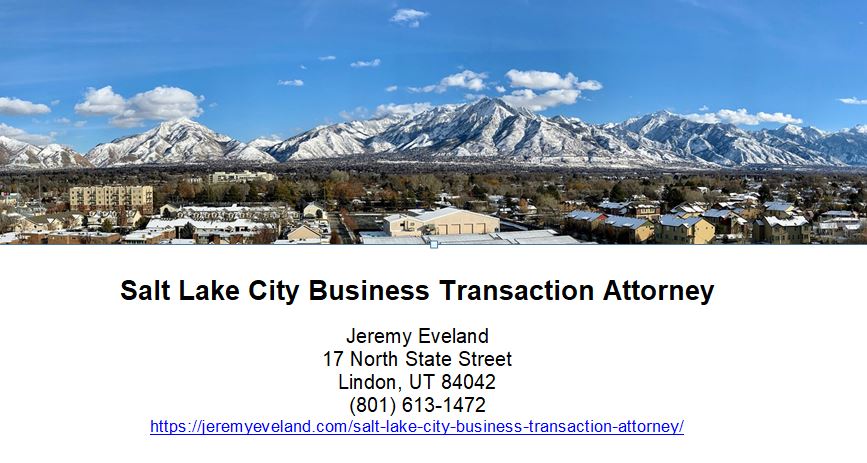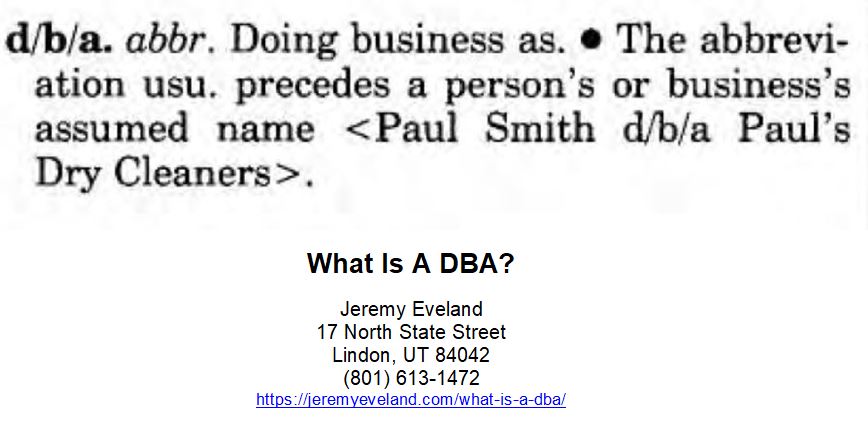Non-Profit Foundation Law
-
Utah Foundation Lawyer
- Introduction
- Navigating the Regulatory Environment of Non-Profit Foundations
- The Benefits of Donations to Non-Profit Foundations
- The Role of Trustees in Non-Profit Foundations
- Exploring the Tax Implications of Non-Profit Foundations
- Understanding the Legal Structures of Non-Profit Foundations
- Foundation Directors in Utah Non-Profits
- Why you Need a Business Law Attorney for Foundations
- Q&A
“Protecting Non-Profit Foundations with Comprehensive Legal Solutions”
Introduction
Non-profit foundation law is a complex and ever-evolving area of law that governs the formation and operation of non-profit organizations. Non-profit foundations are organizations that are formed to pursue charitable, educational, religious, or other public-benefit purposes. Non-profit foundation law is a specialized area of law that requires an understanding of both state and federal laws. This area of law is important for those who are interested in forming a non-profit organization, as well as those who are already involved in the management of a non-profit foundation. This introduction will provide an overview of the key aspects of non-profit foundation law, including the formation of a non-profit organization, the legal requirements for operating a non-profit foundation, and the tax implications of non-profit organizations.
Navigating the Regulatory Environment of Non-Profit Foundations
Non-profit foundations are organizations that are established to provide charitable services to the public. As such, they are subject to a variety of regulations that are designed to ensure that they are operating in a responsible and ethical manner. Navigating the regulatory environment of non-profit foundations can be a complex and daunting task. This article will provide an overview of the key regulations that non-profit foundations must comply with in order to remain in good standing.
The first and most important regulation that non-profit foundations must comply with is the Internal Revenue Service (IRS) code. This code outlines the requirements for tax-exempt status, which is essential for non-profit foundations to be able to receive donations and other forms of funding. The IRS code also outlines the reporting requirements for non-profit foundations, including the filing of annual tax returns and other financial documents.
In addition to the IRS code, non-profit foundations must also comply with state and local laws. These laws vary from state to state, but generally require non-profit foundations to register with the state and obtain a license to operate. They may also be subject to additional regulations, such as those related to fundraising activities.
Non-profit foundations must also comply with the laws and regulations of the federal government. These include the Federal Trade Commission (FTC) and the Securities and Exchange Commission (SEC). The FTC regulates the advertising and marketing activities of non-profit foundations, while the SEC regulates the financial activities of non-profit foundations.
Finally, non-profit foundations must comply with the laws and regulations of their own governing body. This may include the rules and regulations of the board of directors, as well as any other policies and procedures that have been established by the foundation.
Navigating the regulatory environment of non-profit foundations can be a complex and daunting task. However, by understanding the key regulations that apply to non-profit foundations, organizations can ensure that they are in compliance and remain in good standing.
The Benefits of Donations to Non-Profit Foundations
Donations to non-profit foundations are an important source of funding for many organizations. These donations can provide much-needed financial support for a variety of causes, from medical research to environmental protection. Donations to non-profit foundations can also have a positive impact on the donor, providing them with a sense of satisfaction and accomplishment. Here are some of the benefits of donating to non-profit foundations.
First, donations to non-profit foundations can help to support important causes. Non-profit foundations often focus on causes that are not adequately funded by government or corporate sources. By donating to these organizations, donors can help to ensure that these causes receive the attention and resources they need.
Second, donations to non-profit foundations can provide donors with a sense of satisfaction. Donors can feel good knowing that their money is going to a cause that they believe in. This can be especially rewarding for donors who are passionate about a particular cause.
Third, donations to non-profit foundations can provide donors with tax benefits. Depending on the type of donation and the organization, donors may be able to deduct their donations from their taxes. This can be a great way to reduce the amount of taxes owed while still supporting a cause that is important to the donor.
Finally, donations to non-profit foundations can help to build relationships. Donors can build relationships with the organizations they support, as well as with other donors. This can be a great way to network and build connections with like-minded individuals.
Donations to non-profit foundations can have a positive impact on both the donor and the organization. Donors can feel good knowing that their money is going to a cause that they believe in, while organizations can benefit from the financial support. Donations to non-profit foundations can be a great way to make a difference in the world.
The Role of Trustees in Non-Profit Foundations
Trustees play a vital role in non-profit foundations, providing oversight and guidance to ensure the organization is achieving its mission and goals. Trustees are responsible for setting the overall direction of the foundation, approving budgets and policies, and ensuring that the foundation is compliant with all applicable laws and regulations.
Trustees are responsible for setting the foundation’s mission and vision, and for ensuring that the foundation is working towards achieving its goals. They must ensure that the foundation is operating in a manner that is consistent with its mission and values. Trustees must also ensure that the foundation is financially sound and that it is using its resources in an effective and efficient manner.
Trustees are also responsible for approving the foundation’s budget and policies. They must ensure that the budget is realistic and that the foundation is able to meet its financial obligations. Trustees must also ensure that the foundation’s policies are in line with its mission and values.
Trustees are also responsible for ensuring that the foundation is compliant with all applicable laws and regulations. This includes ensuring that the foundation is properly registered with the appropriate government agencies, that it is filing the necessary paperwork, and that it is adhering to all applicable laws and regulations.
Finally, trustees are responsible for overseeing the foundation’s operations. This includes monitoring the foundation’s performance, ensuring that it is achieving its goals, and providing guidance and support to the foundation’s staff and volunteers.
Trustees play a critical role in non-profit foundations, providing oversight and guidance to ensure that the foundation is achieving its mission and goals. They are responsible for setting the foundation’s mission and vision, approving budgets and policies, and ensuring that the foundation is compliant with all applicable laws and regulations. They are also responsible for overseeing the foundation’s operations and providing guidance and support to the foundation’s staff and volunteers.
Exploring the Tax Implications of Non-Profit Foundations
Non-profit foundations are organizations that are established to provide charitable services to the public. They are exempt from paying taxes on their income, as long as they meet certain criteria. However, there are still certain tax implications that non-profit foundations must be aware of.
First, non-profit foundations must be organized and operated exclusively for charitable, educational, religious, or scientific purposes. This means that the foundation must not be organized or operated for the benefit of private interests. If the foundation does not meet this criteria, it may be subject to taxation.
Second, non-profit foundations must not engage in any activities that are not related to their charitable purpose. This includes activities such as lobbying, political campaigning, and other activities that are not related to the foundation’s mission. If the foundation engages in any of these activities, it may be subject to taxation.
Third, non-profit foundations must not distribute any of their income or assets to their members, directors, or officers. This includes salaries, bonuses, or other forms of compensation. If the foundation does distribute any of its income or assets, it may be subject to taxation.
Finally, non-profit foundations must file an annual information return with the Internal Revenue Service (IRS). This return must include information about the foundation’s activities, income, and assets. The IRS may use this information to determine whether the foundation is meeting the criteria for tax-exempt status.
Non-profit foundations play an important role in providing charitable services to the public. However, they must be aware of the tax implications of their activities. By understanding the criteria for tax-exempt status and filing the necessary returns with the IRS, non-profit foundations can ensure that they remain in compliance with the law.
Understanding the Legal Structures of Non-Profit Foundations
Non-profit foundations are organizations that are established to provide charitable services to the public. They are typically organized as either a trust, corporation, or unincorporated association. Each of these legal structures has its own advantages and disadvantages, and it is important to understand the differences between them in order to make an informed decision when setting up a non-profit foundation.
Trusts are the most common legal structure for non-profit foundations. A trust is a legal arrangement in which a trustee holds legal title to property for the benefit of another person or entity. The trustee is responsible for managing the trust assets and distributing them according to the terms of the trust. Trusts are relatively easy to set up and provide a great deal of flexibility in terms of how the assets are managed and distributed. However, trusts are not subject to the same level of public scrutiny as corporations and unincorporated associations, and they may not be the best choice for foundations that are seeking public donations.
Corporations are another popular legal structure for non-profit foundations. A corporation is a legal entity that is separate and distinct from its owners. Corporations are subject to state and federal laws, and they must comply with certain filing and reporting requirements. Corporations also provide limited liability protection to their owners, which can be beneficial for foundations that are seeking public donations. However, corporations are more complex to set up and manage than trusts, and they may not be the best choice for smaller foundations.
Unincorporated associations are the least common legal structure for non-profit foundations. An unincorporated association is a voluntary organization of individuals who come together for a common purpose. Unincorporated associations are not subject to the same level of public scrutiny as corporations, and they provide a great deal of flexibility in terms of how the assets are managed and distributed. However, unincorporated associations do not provide limited liability protection to their members, and they may not be the best choice for foundations that are seeking public donations.
When setting up a non-profit foundation, it is important to understand the differences between the various legal structures in order to make an informed decision. Each structure has its own advantages and disadvantages, and it is important to consider all of the factors before making a final decision.
Foundation Directors in Utah Non-Profits
Utah is home to a wide variety of non-profit organizations, each of which is governed by a board of directors. These directors are responsible for setting the organization’s mission and vision, as well as overseeing its operations. They are also responsible for ensuring that the organization is compliant with all applicable laws and regulations.
Foundation directors in Utah non-profits are typically appointed by the board of directors and serve at their discretion. They are responsible for developing and implementing the organization’s strategic plan, as well as managing its finances and fundraising activities. They are also responsible for overseeing the organization’s staff and volunteers, and ensuring that the organization is meeting its goals and objectives.
Foundation directors in Utah non-profits must have a strong understanding of the organization’s mission and vision, as well as the legal and financial aspects of running a non-profit. They must also have excellent communication and organizational skills, as well as the ability to work with a variety of stakeholders.
Foundation directors in Utah non-profits must also be able to work with a variety of donors and funders, as well as government agencies and other organizations. They must be able to develop and maintain relationships with these stakeholders, as well as ensure that the organization is meeting its goals and objectives.
Foundation directors in Utah non-profits must also be able to work with a variety of volunteers and staff, as well as manage the organization’s finances and fundraising activities. They must also be able to develop and implement the organization’s strategic plan, as well as ensure that the organization is compliant with all applicable laws and regulations.
Foundation directors in Utah non-profits must also be able to work with a variety of stakeholders, including donors, funders, government agencies, and other organizations. They must be able to develop and maintain relationships with these stakeholders, as well as ensure that the organization is meeting its goals and objectives.
Why you Need a Business Law Attorney for Foundations
As a business owner, it is important to understand the legal implications of setting up a foundation. A business law attorney can help you navigate the complexities of the legal process and ensure that your foundation is established in accordance with the law.
A business law attorney can provide advice on the best structure for your foundation, including the type of entity to use and the appropriate governing documents. They can also help you draft the necessary documents, such as the articles of incorporation, bylaws, and other legal documents. Additionally, they can provide guidance on the tax implications of setting up a foundation, as well as the necessary steps to obtain tax-exempt status.
A business law attorney can also help you understand the legal requirements for running a foundation, such as filing annual reports and complying with state and federal regulations. They can also provide advice on how to protect the assets of the foundation, such as setting up a trust or other legal entity to manage the funds.
Finally, a business law attorney can help you with any disputes that may arise, such as disputes between the foundation and its donors or between the foundation and its beneficiaries. They can provide advice on how to resolve the dispute and ensure that the foundation is protected.
By working with a business law attorney, you can ensure that your foundation is established and managed in accordance with the law. This will help protect the assets of the foundation and ensure that it is able to fulfill its mission.
Q&A
1. What is a non-profit foundation?
A non-profit foundation is a type of organization that is created to provide charitable, educational, religious, or other social services to the public. Non-profit foundations are typically funded by donations from individuals, businesses, or other organizations.
2. What are the legal requirements for establishing a non-profit foundation?
In order to establish a non-profit foundation, you must first incorporate the organization in the state in which it will operate. You must also obtain a federal tax identification number from the IRS and register with the state in which the foundation will operate. Additionally, you must create a board of directors and develop bylaws that outline the organization’s purpose and operations.
3. What are the tax implications of operating a non-profit foundation?
Non-profit foundations are exempt from federal income tax and may be eligible for other tax benefits, such as exemption from state and local taxes. Additionally, donations to non-profit foundations may be tax deductible for the donor.
4. What are the reporting requirements for non-profit foundations?
Non-profit foundations must file an annual information return with the IRS, known as Form 990. This form must include information about the organization’s finances, activities, and governance. Additionally, non-profit foundations must file state and local reports as required by the state in which they operate.
5. What are the rules regarding fundraising for non-profit foundations?
Non-profit foundations must comply with all applicable laws and regulations regarding fundraising. This includes registering with the state in which the foundation operates and obtaining any necessary permits or licenses. Additionally, non-profit foundations must ensure that all donations are properly documented and reported.
6. What are the rules regarding the use of funds by non-profit foundations?
Non-profit foundations must use their funds for the purposes outlined in their bylaws. Additionally, non-profit foundations must ensure that all funds are used in accordance with applicable laws and regulations.
7. What are the rules regarding the dissolution of a non-profit foundation?
In order to dissolve a non-profit foundation, the organization must first obtain approval from the state in which it operates. Additionally, the organization must distribute any remaining assets to another non-profit organization or to the government. The organization must also file a final tax return with the IRS.
Non-Profit Foundation Law Consultation
When you need legal help with Non-Profit Foundation call Jeremy D. Eveland, MBA, JD (801) 613-1472 for a consultation.
Jeremy Eveland
17 North State Street
Lindon UT 84042
(801) 613-1472
Related Posts
Legal Requirements to Start a Business
Real Estate Attorneys in Salt Lake City Utah
Business Contract Lawyer Riverton UT
Business Law and Intellectual Property
Commercial Litigation Strategies


























